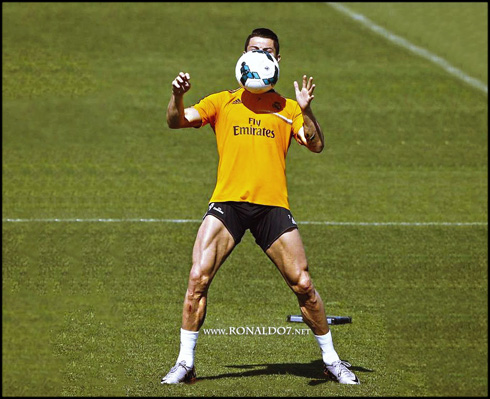Like it has been pointed out, the distance a soccer player covers is dependent on his position. Apart from goalkeepers, central-backs tend to run the least while defensive midfielders run the most. This number is heavily correlated to the teams' playing style though - teams who rely on ball-dominant posession football (e.g. Bayern Munich) don't run as much teams who like to counter-attack (e.g. Borussia Dortmund). Also, the type of game plays a role - if one team is leading 4-0 after 60 minutes in an unimportant, obiously both teams will coast. Therefore, just stating the 'average distance' being covered is a bit simplistic.
Nevertheless, I think you can say for sure that every professional soccer player is expected of being able to run at least 11 kilometres (~6.8 miles) per 90 minutes. Like I said, this number changes from match to match due to the reasons I mentioned - in a rather meaningless game, it is possible that the majority won't break the 10 km-mark (~6.2 miles). in a high-intensity match of supreme significance (e.g. a knock-out game in the CL) the covered distance will rise, and it is normal to run 12 km (~7.5 miles) if you are not a centre-back, forward or goalkeeper.
Let's post some examples. The Bundesliga is probably the league who provides the most detailed stat package.
Here is an exemplary match-sheet (of the Bayern's last Bundesliga game). If you click on the players' names, you can see all important stats including covered distance. For example, Thomas Müller leads all players with 11.79 kilometres (he usually does). The majority is hovering around the 10.5 km-mark though, as it was the last game of the season and it couldn't change the outcome of anything.
Another
example - an actually meaningful game, the CL semi between Bayern and Barcelona (second leg, 3-0 Bayern win, hehe). The UEFA also provides stats, not as detailed as the Bundesliga ones, but still, covered distance is included. If you click through the names, you will see, that e.g. the Bayern players are hovering around the 11.5 km per 90-mark now. The leading playing is again Müller with 12.8 km (~8 miles).
But of course, you cannot bring this kind of effort every game, so this shows the peak number, and 12.8 km für Müller is actually very impressive, especially because he played as a supporting striker who normally don't run that much.
There are some defensive midfielders though who can provide this on a daily basis. The two players in the Bundesliga who run the most are Christoph Kramer from Mönchengladbach (also in Germany's WC squad) and Vladímir Darida from Freiburg (both playing in a double pivot), who run 13.1 km resp. 12.9 km per 90 on average - an insane number. The highest number of distance covered in a Bundeliga match in recent years belongs to Tolga Ciğerci, who noted something like 14.2 km (~8.8 miles) once. (But this is an outlier, of course).
TL;DR: 7 miles on average is probably adequate. However, players are able to run up to 8 miles or even more in important matches. (The 9.5 miles who have been mentioned are not realistic though.) Even goalies cover between 2.5 and 3.5 miles per 90.
The amount of stamina and endurance you need to be a soccer player is incredible. Please also note that while they only play once or twice a week, they don't have a lot of time to rest. An NBA player has to play a crazy number of games, but they also have a three to four-month off-season. If Germany reached the World Cup final, the players would have to play on 13th July. The first matchday of the Bundesliga is on 22nd August. For most of the clubs, training camp has already begun. World Cup players of course are allowed to enter training camp later, but still, their vacation probably won't last more than 2 weeks.
TL;DR²: Everybody who claims that soccer players are not athletic/soft/etc. - you're wrong.

